You would like to have your crossbite treated? Here you will find all information about malocclusion and crossbite treatment.
When one or more teeth are outside the ideal dental arch shape of the upper or lower jaw, dentists and orthodontists refer to this as malocclusion.
For example, the teeth may be rotated, protrude forward or backward, or simply not grow out where they should.
In most cases, tooth misalignments have only aesthetic effects. This means that although they disturb us visually, they do not negatively affect our health.
| Get 150 € discount on your dental correction! |

Book a consultation appointment now at a nearby DrSmile partner practice and find out if teeth straightening with aligners is right for you.
The appointment is completely non-binding and does not involve any costs.
With the code “THATSMILE150” you will receive 150 € discount on the treatment.
In some circumstances, however, crooked teeth can also make it difficult to clean the teeth or interfere with food intake. Speech disorders (e.g. lisp) are also not uncommon.
Serious health consequences are also possible. However, they are usually the result of extreme tooth misalignment.
A relatively common malocclusion is the so-called crossbite. This is a malocclusion in which the relationship between the upper and lower jaw is not correct.
This often bothers those affected for aesthetic reasons. In some cases, however, the misalignment of teeth must also be treated for health reasons.
You can find more information about the topic of crossbite as well as possibilities of treatment in this article.
Here you can also find out whether discreet treatment with invisible braces (aligners) is possible.
You want to know directly? Then make a free and non-binding consultation appointment here.
You can find a first overview of all malocclusions here.
Many patients have already had their misaligned teeth successfully treated with invisible dental splints. Take a look at their before/after pictures here.

What exactly is a crossbite?
A crossbite is always referred to when the posterior teeth do not close properly when biting down.
Specifically, this means that the posterior teeth of the lower jaw are too far out toward the cheek or the posterior teeth of the upper jaw are too far in toward the palate.
Compared to other dental malocclusions, crossbite is relatively common. Dentists and orthodontists distinguish three types of crossbites:
1. head bite
In a normal set of teeth, the cusps and dimples of the molars interlock perfectly when you bite down – you can picture them like gears.
When biting together, the lower incisors are almost completely covered by the upper incisors.
The situation is completely different with the head bite: Here, the cusps of the molars and the edges of the anterior teeth meet directly, resulting in a malocclusion.
2. unilateral crossbite
The name already gives it away: In a unilateral crossbite, the bite does not function properly on one side only.
On the opposite side, however, the teeth in the upper and lower jaws bite together correctly. Causes of unilateral crossbite can be tooth rotations or tooth tilts.
3. bilateral crossbite
Here, too, the name already suggests it: In a bilateral crossbite, the malposition affects both sides. There is a disturbed relationship between the upper jaw and the lower jaw.
One cause of bilateral crossbite may be a too narrow upper jaw.
For example, a crossbite may look like this:
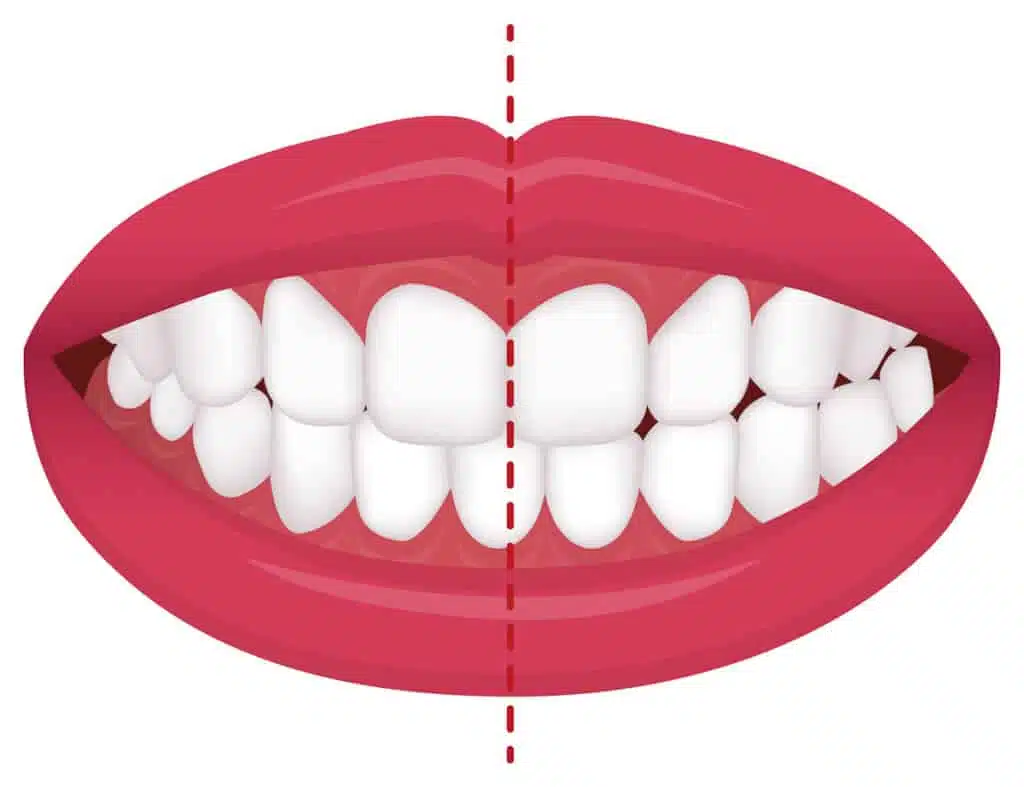
Crossbite causes: How does the malocclusion develop?
A crossbite can either be genetically predisposed or acquired or encouraged by various habits or circumstances.
The former include, for example:
- Tooth tilts
- Muscular imbalances
- Premature or delayed eruption of teeth resulting in jaw size discrepancies.
The latter include, for example:
- Sucking your thumb for too long.
- Accidents
Children who were born with a cleft lip or palate and whose upper jaw could not develop properly due to the resulting scars also tend to have a crossbite.
| Get 150 € discount on your dental correction! |

Book a consultation appointment now at a nearby DrSmile partner practice and find out if teeth straightening with aligners is right for you.
The appointment is completely non-binding and does not involve any costs.
With the code “THATSMILE150” you will receive 150 € discount on the treatment.
Crossbite consequences: What are the health effects?
A crossbite can affect the way tendons, muscles and joints work together. It can have a negative impact on health and lead to visual impairment.
Possible cosmetic and health consequences may include:
- In a unilateral crossbite, only one side of the jaw is loaded. This can result in jaw joint pain and discomfort when chewing.
- The too narrow upper jaw can make breathing through the nose difficult.
- The tongue motor function can be disturbed by the incorrect ratio of the lower jaw to the upper jaw. Another consequence of the mismatch can be crooked teeth. The latter may lead to speech disorders such as lisping.
- Due to the incorrect loading of the jaw, migraine, neck pain, tinnitus and tension are typical crossbite symptoms.
- The malposition also ensures faster wear of the temporomandibular joints.
- Last but not least, a strongly pronounced crossbite can lead to a shift in facial proportions. Visually, the face then looks crooked. This impairment due to the crossbite can in turn lead to psychological problems.
Treat crossbite: How to proceed?
Especially in the case of pronounced crossbites, treatment is unavoidable in order to avoid cosmetic or even health impairments.
Crossbite children and adolescents: how it is treated
The crossbite should be detected and treated as early as possible in children and adolescents. As a general rule, the younger the patient, the less complicated the treatment.
This is because the jaw is still growing in childhood and is therefore easier to regulate.
Most often, a too narrow upper jaw is the cause of a crossbite. The aim of the treatment is therefore to increase this.
In children, loose or fixed braces are usually used. Other dental appliances and measures for crossbite treatment in children include activators, various active plates, quadhelixes or palatal expansion.
If the malocclusion was diagnosed late, speech disorders may have already developed.
In this case, crossbite treatment in children is often supplemented by speech therapy.
In contrast, crossbite surgery is only necessary in rare cases in children.
Crossbite adults: Which treatment is suitable?
In adults, pain or tension in the temporomandibular joints may be the first sign of a crossbite (crossbite symptoms). The visit to the orthodontist should then no longer be postponed.
The treatment of crossbite in adults is often somewhat more complex because the jaw is already fully grown.
However, the complexity of the treatment always depends on the individual extent of the malposition. Often, the crossbite can be easily corrected with the help of braces.
Fixed braces must be worn for several months, in some cases even for several years.
As a result, quite a few adults fear restrictions in their professional and everyday lives.
Also for aesthetic reasons, fixed braces are an absolute emergency solution for most adults.
In addition, there is the relatively high price. This is because health insurance only covers the costs of crossbite treatment in extreme cases.
As a rule, a crossbite correction for adults must therefore be paid for by the patient, which is often no walk in the park with treatment costs from 6000 euros upwards.

When is crossbite surgery necessary?
In serious cases, adults cannot avoid crossbite surgery. For example, if the transversal dental arch width of the upper jaw is extremely narrow and even affects the shape of the face (keyword crossbite – crooked face).
As part of the crossbite surgery, the jaw can be expanded with the help of a surgically assisted palatal expansion.
DrSmile: Treat crossbite with invisible braces
In some cases, adults can avoid fixed braces. This is because treatment with transparent dental splints is often possible for mild and sometimes moderately severe manifestations of crossbite.
These so-called aligners enable discreet tooth correction, as they are completely transparent and fit precisely on the teeth.
They can be removed at any time. However, this is only recommended for eating and daily dental care, as they must be worn for at least 22 hours a day.
Another plus point is the price: the cost of invisible dental trays, for example, starts at just 1790 euros or 33 euros a month with the renowned provider DrSmile.
Here you can find more information about DrSmile prices.
You can find out whether your crossbite can be treated with invisible aligners during a free and non-binding consultation appointment, which you can book here.
If regular aligners reach their limits, the invisible braces of Invisalign can treat a more pronounced crossbite in some cases.
However, they are significantly more expensive than the products of competitors.
| Get 150 € discount on your dental correction! |

Book a consultation appointment now at a nearby DrSmile partner practice and find out if teeth straightening with aligners is right for you.
The appointment is completely non-binding and does not involve any costs.
With the code “THATSMILE150” you will receive 150 € discount on the treatment.
FAQs about crossbite treatment and crossbite braces
At this point we will answer some frequently asked questions about overbite treatment and crossbite braces.
When should a crossbite be treated?
A crossbite should always be corrected as early as possible, preferably between the ages of 4 and 8. The treatment becomes more complex the later it is started.
Can a crossbite get worse?
As the jaw grows, the crossbite will worsen rather than improve. For this reason, one should always start with the crossbite treatment as early as possible.
Is crossbite surgery paid for by health insurance?
Crossbite surgery is only necessary if the jaw misalignment is severe. It is true that necessary orthodontic treatment is only paid for by the statutory health insurers up to the age of 18 – but necessary operations are also paid for beyond this age.
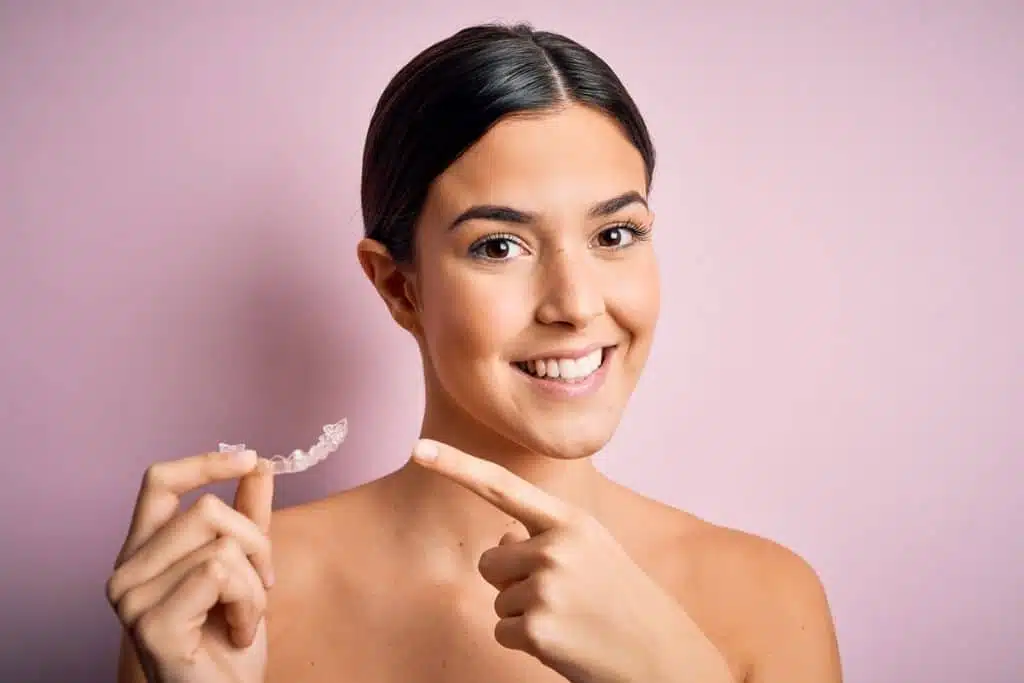
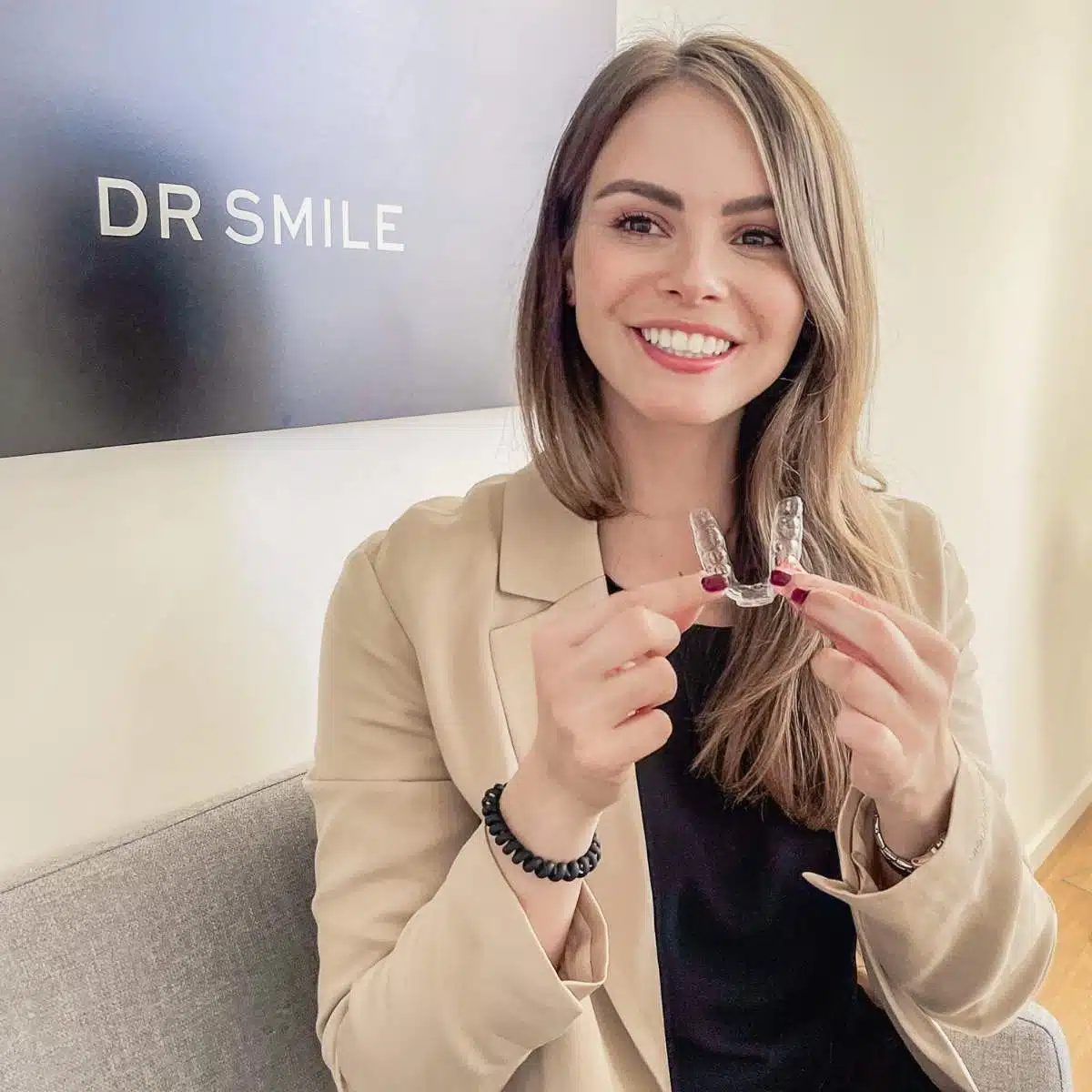
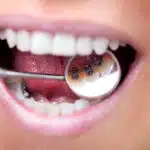
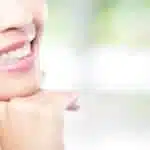
Leave a Reply